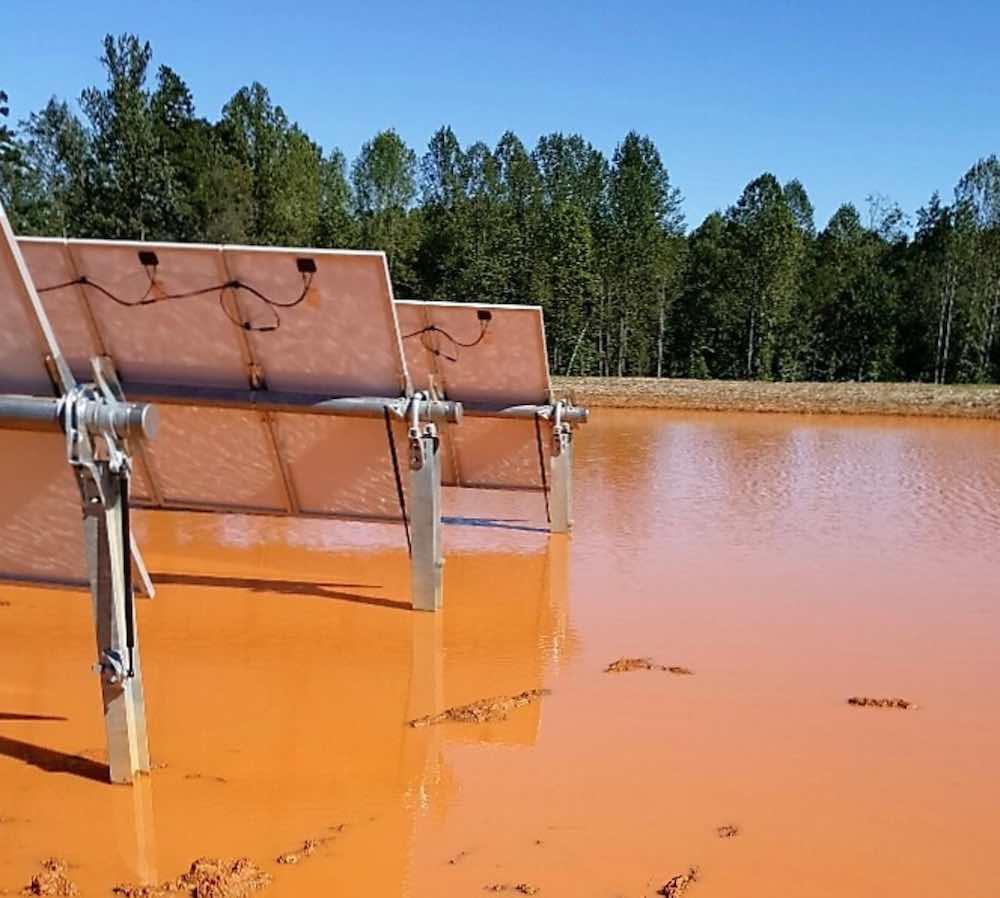What happens to a solar farm caught up in a major flooding event? Reports – and images – last week revealed that the Sunshine Coast Council’s 15MW Valdora solar farm was “substantially” inundated during the catastrophic floods in Queensland and New South Wales.
So how did that play out? And what does it mean for the solar farm’s future in a climate compromised world where “one-in-1000 year” floods seem to happen every other year?
As One Step Off The Grid sister site RenewEconomy reported back in 2017, the Sunshine Coast Council’s Valdora solar farm is a bit special, being the first large-scale PV project to be commissioned, built and owned by a local government group in Australia.
The $50 million solar farm – which was more than four years in the making – was designed to supply the equivalent of all council’s electricity needs, lock in low energy costs and deliver significant savings over the 30 year life of the plant.
And, according to an update from the council last August, it has been doing a pretty good job, so far – putting it on track to deliver $22 million in savings (after costs) for ratepayers from lower electricity costs over the next 30 years.
But was a possible flood factored in to the equation?
Yes, it was. According to a Sunshine Coast Council spokesperson, a comprehensive flood study, based on the 2014 Maroochy River Flood model, was undertaken by an industry leading consultancy and council prior to the projects’ construction.
“This informed the design and construction of the solar farm that was tailored to the cane land site and the expectation that at times it would become inundated,” the spokesperson said.
“All key components within the solar farm, including electrical equipment, solar panels, inverters, and switchboards, are situated well above the 1:100 flood level and the highest flood levels ever recorded in the area.”
Great. But what about 1:500 or, as the NSW premier described it for his state, 1:1000 year flooding events? What happens then?
Sunshine Coast Council says that during the recent rain event, the site did become “substantially inundated” for the first time. But thanks to the flood planning done prior to its construction, no infrastructure related to operational performance was affected by flood waters.
So what was affected and how was the situation managed?
“The flood emergency plan was activated, and the site was disconnected from Energex grid on February 26,” the spokesperson told One Step.
“Flood levels were monitored throughout the rain event and at its highest point the flood waters were noted to be approximately 1.2 metres below the solar array and other critical infrastructure.
“When flood levels subsided, a full inspection was carried out, which is substantial as it relates to the entire 25-hectare solar farm. Such a significant piece of electrical infrastructure cannot be merely switched back into the Energex grid and must undergo a ‘warming up’ period.
As reported in the Sunshine Coast News last week, two of the solar farm’s six power conversion units were reconnected to the grid on March 9. An update from the council this week confirmed that the rest of the project was completely reconnected to the grid from Friday, March 11.
In summary “no infrastructure related to the operational performance was inundated. There was no damage to those components,” the spokesperson told One Step.
“The solar farm design, construction, operation and more recently activation of the emergency flood plan have all performed to expectation and the solar farm continues to provide green sustainable electricity to the Energex grid.
“The multi award-winning Sunshine Coast Solar farm …continues to provide savings to council and reduce council’s operating costs. It delivers benefits to our environment, offsetting more than 100% of council’s electricity consumption.”

Sophie is editor of One Step Off The Grid and deputy editor of its sister site, Renew Economy. Sophie has been writing about clean energy for more than a decade.

